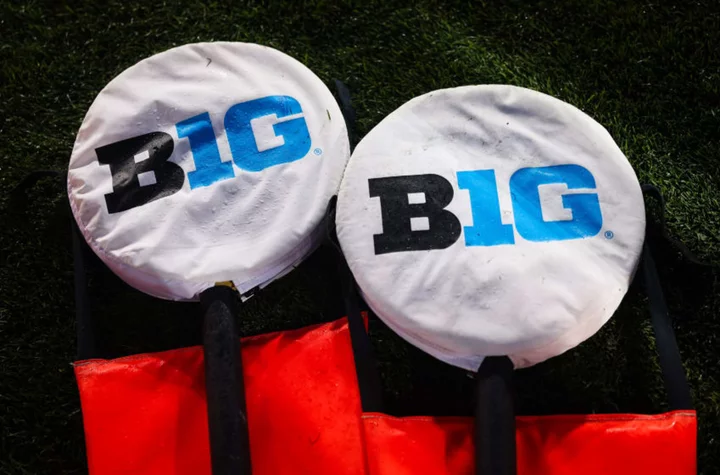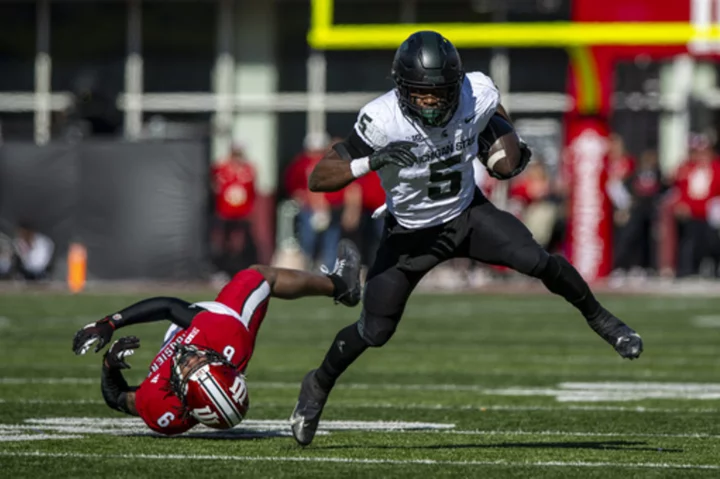Entering the Week 8 slate, Michigan, Ohio State and Penn State are all undefeated and ranked inside of the top 10. No. 3 Ohio State hosts No. 7 in The Horseshoe on Saturday, while unranked Michigan State hosts No. 2 Michigan in East Lansing. While it has most certainly hit the fan for the Spartans, this could be a special season for either the Buckeyes, Nittany Lions or Wolverines. Buckle up, y'all!
So with that in mind, there is a decent chance all three College Football Playoff contenders finish the season with identical 11-1 (8-1) records. A three-way tie atop the Big Ten East division will create some great confusion as to who will get to play in Indianapolis for a conference championship. Head-to-head is how tiebreakers are solved when it comes down to two teams. So what about three teams?
In this hypothetical exercise, let's say Ohio State beats Penn State, Penn State beats Michigan and Michigan beats Ohio State. All three will have a great win over a division rival, as well as a quality loss. We know that the Big Ten will be doing away with divisions once Oregon, UCLA, USC and Washington join the conference next year to make it an 18-team league come 2024, but what about this season?
Here is a look at what all will go into a tiebreaker should Michigan, Ohio State and Penn State all be 11-1 (8-1) at the end of the regular season. It is a lengthy process, but the Big Ten has you covered.
Big Ten tie-breaking procedures: Who wins a division in a three-way tie?
Outlined on the Big Ten website, it is all about figuring out ways to eliminate a third or more teams to determine a division winner. Since everybody plays everyone in a division, it will come down to the head-to-head matchup's winner advancing once it has been whittled down to just two teams. As for peeling off the third or more teams, there is an eight-step elimination process in place by the Big Ten.
Here it is as follows, per their website:
- The records of the three (or more) tied teams will be compared based on winning percentage in games between the tied teams.
- The records of the three (or more) tied teams will be compared based on winning percentage within their division.
- The records of the three (or more) teams will be compared against the next highest placed teams in their division in order of finish (4, 5, 6, and 7).
- The records of the three (or more) teams will be compared based on winning percentage against all common conference opponents.
- The records of the three (or more) teams will be compared based on the best cumulative conference winning percentage of non-divisional opponents.
- The records of the three (or more) teams will be compared against the highest placed non-divisional teams in their division order of finish (1, 2, 3, 4, 5, 6 and 7).
- The team with the best overall winning percentage [excluding exempted games] shall be the representative.
- The representative will be chosen by random draw.
I gotta be honest. This is really confusing. If this scenario plays out, it will likely get down to steps four, five or six. We would be assuming in this exercise that Michigan, Ohio State and Penn State have all beaten their four other division rivals head-to-head in Indiana, Maryland, Michigan State and Rutgers. It might very well come down to who played the tougher three-game slate out of the Big Ten West..
So with that in mind, here are the three non-divisional games on each of the three teams' plates.
- Michigan: Nebraska (45-7 W), Minnesota (52-10 W), Purdue (TBD)
- Ohio State: Minnesota (TBD), Purdue (41-7 W), Wisconsin (TBD)
- Penn State: Illinois (30-13 W), Iowa (31-0 W), Northwestern (41-3 W)
Michigan and Ohio State both play Minnesota and Purdue this year, while none of Penn State's Big Ten West games overlap. It might honestly come down to who wins the Big Ten West this year. We still have so far to go, but Iowa has already beaten Wisconsin head-to-head. Therefore, Penn State has the better win. Of course, that might be dragged down by Northwestern being such a chaotic mess.
Overall, Michigan's weaker Big Ten West draw may eliminate them and give the Big Ten East division title to the winner of the Ohio State-Penn State game, depending on how Iowa plays going forward.
If you are as confused as I am, let's hope we have a bit more clarity over the next several weeks.









